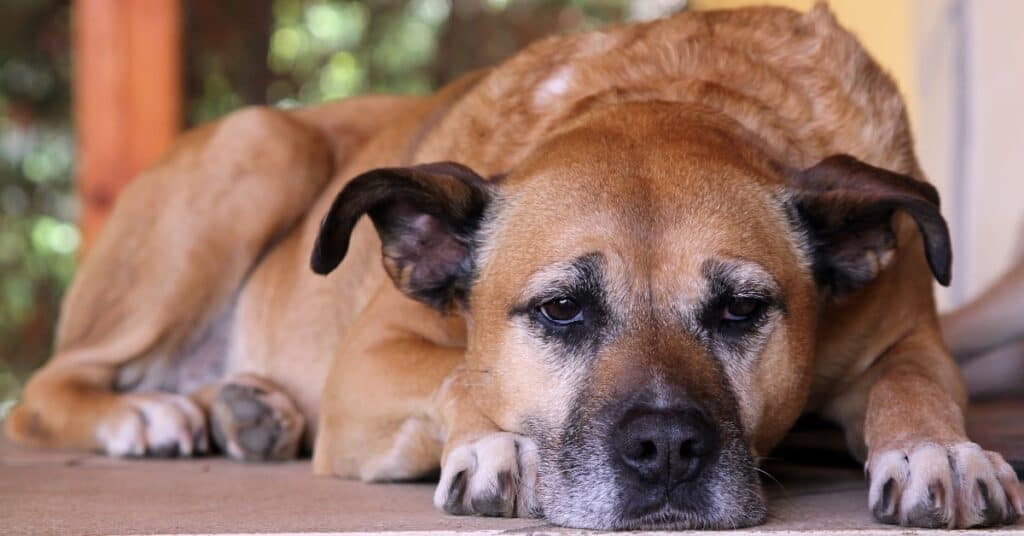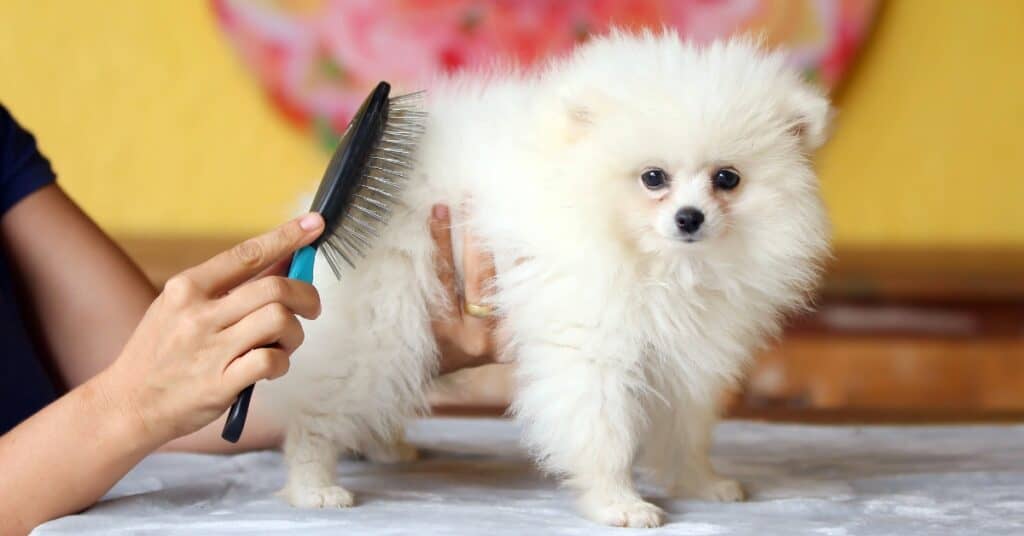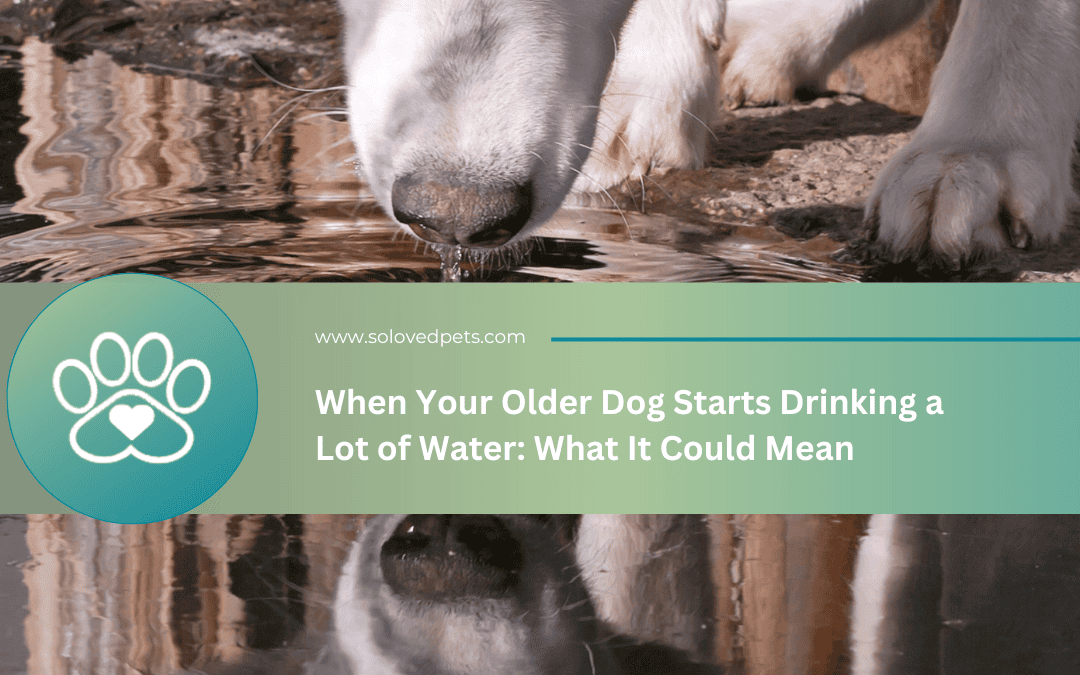You might have noticed your older dog heading to the water bowl more often than usual. It’s easy to brush it off as just a quirk, but this change in your dog’s behavior can be a sign that something’s happening with your dog’s health. But what does it mean when an older dog starts drinking a lot of water?
We all want to ensure our pets stay happy and healthy, so when they start doing things differently—like drinking more water—it’s important to pay attention.
Let’s explore what could be behind your dog’s increased thirst and what steps you can take to keep them comfortable.
What Does It Mean When an Older Dog Starts Drinking a Lot of Water?
As pet owners, we know our senior dogs often show subtle signs when something is off. If your older dog drinks a lot of water all of a sudden, it’s worth paying attention.
Increased water intake can indicate various health conditions that may require attention. Let’s dive into why your senior dog’s excessive thirst might be happening and what it could mean for their overall well-being.
Understanding Your Senior Dog’s Drinking Habits
Senior dogs tend to experience changes in their water consumption as they age. Sometimes, these changes are normal, especially if your dog’s diet shifts from wet food to dry food, leading to an increased thirst.
However, if your senior dog is drinking excessive amounts beyond their normal habits, this could be a signal of something more serious.
Monitoring your dog’s water intake can help you detect shifts in their health early.
Signs and Symptoms of Increased Thirst
Recognizing the signs and symptoms of increased thirst in your dog can help you catch potential health issues early. Here are some common indicators to watch for:
- Increased water intake: If your dog is drinking more water than usual, it’s a clear sign of increased thirst.
- Frequent urination: Dogs that drink more water will often need to urinate more frequently.
- Dry mouth and tongue: A dry mouth and tongue can indicate dehydration, which can lead to increased thirst.
- Sunken eyes: Sunken eyes are another sign of dehydration, prompting your dog to drink more water.
- Lethargy: Dehydrated dogs may become lethargic, which can also drive them to drink more.
- Loss of appetite: Dehydration can cause a loss of appetite, leading to increased thirst as your dog tries to compensate.
By keeping an eye out for these symptoms, you can ensure your dog stays healthy and hydrated.

Possible Causes of Excessive Thirst in Dogs
Kidney Disease or Kidney Failure
One of the most common causes of increased water intake in older dogs is chronic kidney disease. When your dog’s kidneys start to function less efficiently, it leads to excessive water consumption as the kidneys try to flush toxins from the body.
Senior dogs are particularly susceptible to this condition, and it’s important to recognize signs like excessive thirst and increased urine production. If you notice these symptoms, a complete blood count and urine sample can help your vet assess your dog’s kidney health.
If you’re ready to make plans for goodbye or need help with an immediate cremation, get in touch with us at So Loved Pets at (919) 370-6469. We’re here to support you and ensure your pet receives the farewell they deserve.
Diabetes Mellitus
Another common cause of excessive drinking in senior dogs is diabetes mellitus. When a dog’s blood sugar levels are too high, they begin to drink excessive amounts of water to compensate for the glucose buildup in their bloodstream.
This health issue can lead to weight loss, increased urination, and an overwhelming thirst. A blood test is necessary to confirm diabetes, but recognizing the early signs in your dog’s behavior is key to managing this condition.

Cushing’s Disease
Cushing’s disease, which involves excessive cortisol production, is another potential reason for a senior dog drinking a lot of water. This condition can lead to excessive thirst, increased urination, and even thin skin in some dogs.
It’s a serious medical condition that requires veterinary attention, but early detection can make a significant difference in treatment.
Other Medical Conditions to Watch For
Urinary Tract Infections (UTIs)
Female dogs, in particular, are more prone to urinary tract infections as they age. A UTI can cause your dog to drink more water and increase urination. If your dog’s thirst is accompanied by signs of discomfort or blood in the urine, consult your vet immediately for treatment.

Liver Disease
Liver disease is another condition that can lead to increased water intake in older dogs. As the liver begins to lose its function, toxins build up in the bloodstream, causing your dog to drink more water in an effort to flush them out.
Liver disease can be potentially life-threatening if left untreated, so it’s critical to seek veterinary medicine advice if you suspect this condition.
Other Factors That Contribute to Increased Thirst
While medical conditions are a significant cause of increased thirst, other factors can also play a role. Understanding these can help you manage your dog’s water intake more effectively:
- Environmental factors: Hot weather, high humidity, and altitude can all make your dog feel thirstier. Dogs lose moisture through panting, especially in hot and humid conditions, leading to increased water consumption.
- Dietary changes: Switching from wet food to dry food can cause your dog to drink more water, as dry food contains less moisture.
- Medications: Certain medications, such as diuretics, steroids, and some antibiotics, can increase your dog’s thirst.
- Age: Senior dogs may experience increased thirst due to age-related health issues.
- Pregnancy and lactation: Pregnant and lactating dogs have higher fluid needs, which can lead to increased water intake.
By considering these factors, you can better understand and manage your dog’s drinking habits.
Dietary Changes and Medications
Changes in diet and certain medications can significantly impact your dog’s water intake. Here’s how:
- Dietary changes: If you switch your dog from wet food to dry food, you may notice an increase in their water consumption. Dry food has a lower moisture content, prompting your dog to drink more to stay hydrated.
- Medications: Some medications, like diuretics, steroids, and specific antibiotics, can cause increased thirst. Diuretics, for example, increase urine production, leading to a higher need for water.
Understanding these influences can help you make informed decisions about your dog’s diet and medication.
Environmental Factors
Environmental conditions can also affect your dog’s thirst levels. Here are some examples:
- Hot weather: In hot weather, dogs lose moisture through panting, which can lead to increased thirst.
- Humidity: High humidity can make dogs feel hotter, causing them to drink more water to cool down.
- Altitude: At higher altitudes, dogs may lose more moisture through panting, leading to increased water intake.
By being mindful of these environmental factors, you can help ensure your dog stays properly hydrated.
Monitoring Your Senior Dog’s Behavior
Keeping a close eye on your senior dog’s behavior is crucial for detecting increased thirst and other health issues early. Here are some tips:
- Monitor water intake: Keep track of how much water your dog is drinking to spot any changes.
- Monitor urination: Pay attention to your dog’s urination habits, noting any increases in frequency.
- Monitor appetite: Observe your dog’s eating habits to detect any loss of appetite.
- Monitor energy level: Watch for changes in your dog’s energy levels, as lethargy can be a sign of dehydration or other health issues.
- Monitor overall health: Regularly check your dog’s overall health, including their weight, coat condition, and behavior.
By staying vigilant and monitoring these aspects of your senior dog’s behavior, you can catch potential health issues early and seek veterinary care if necessary.

How Much Water Is Too Much?
As a general rule, a dog drinks about an ounce of water per pound of body weight daily. If your senior dog is drinking excessive amounts beyond this guideline, it’s time to consult your vet.
Keep a close eye on their drinking habits, especially if you’ve noticed other symptoms like weight loss, increased urination, or changes in their energy levels.
When to See a Veterinarian
If your dog’s excessive thirst is accompanied by any of the above health problems, including kidney disease, diabetes, or a urinary tract infection, don’t wait to seek medical help.
Early detection can save your senior pet from potentially life-threatening conditions. Blood tests, urine samples, and a skin turgor test can provide insight into your dog’s hydration levels and overall health.
Making Sure Your Senior Dog Stays Hydrated
It’s important to ensure that your senior dog always has access to clean and fresh water. However, if your dog is drinking more water than usual, monitoring their water intake can help catch health issues before they become more serious, especially if it’s due to your dog’s excessive thirst.
Whether the cause is related to age, diet, or underlying health conditions, staying proactive about your dog’s health ensures they enjoy a happy, hydrated life well into their senior years.

Making Plans for When It’s Time to Say Goodbye
When your pet reaches the end of their journey, planning for their farewell can feel overwhelming. You want to honor their memory and find peace in the process.
Our modern cremation offers an eco-friendly option, gently returning your pet to nature while using significantly less energy than traditional methods. It allows you to give them a dignified and compassionate farewell.
Personalizing Your Pet’s Memorial
At So Loved Pets, you can personalize your pet’s memorial with a custom urn, keepsake, or ceremony that reflects their personality.
Each option is designed to help you celebrate your pet’s life in a meaningful way. You can choose a service that brings comfort and peace as you honor your pet’s memory.
Planning for Peace of Mind
At So Loved Pets, you can make arrangements for your pet’s farewell ahead of time. See our FREE Pet Cremation Planning Guide to find out more about how to plan. Thinking about the future can give you peace of mind, knowing that when the time comes, the process will be handled according to your wishes.
So Loved Pets is here to guide you through your options, helping you make the choices that feel right for you and your furry friend.
Immediate Cremation Services
If the moment arrives unexpectedly, So Loved Pets is available to provide immediate cremation services.
You can rely on us to handle every detail with compassion and care, allowing you to focus on saying goodbye without the added stress of last-minute planning.
We’re Here for You
If you’re ready to make plans or need help with an immediate cremation, get in touch with us at So Loved Pets at (919) 370-6469. We’re here to support you and ensure your pet receives the farewell they deserve.

